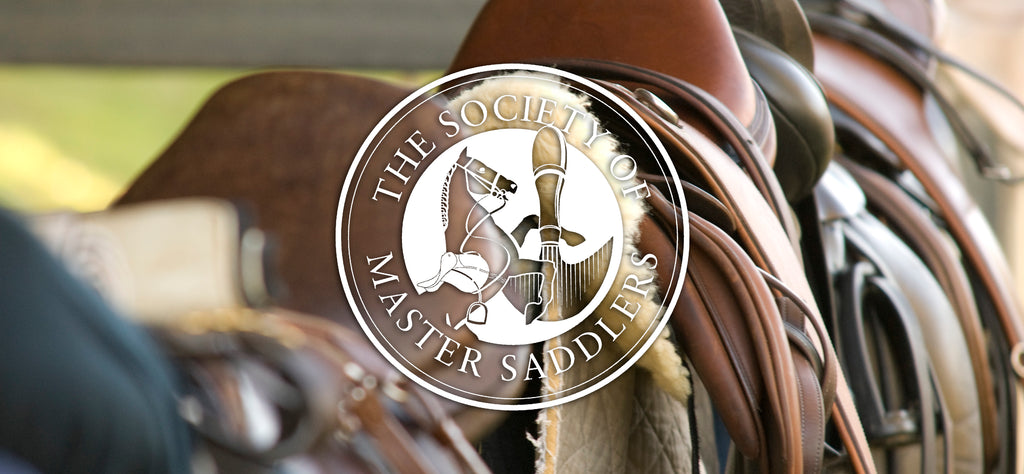THE FITTERS VISIT

PROVIDE THE RIGHT FACILITIES FOR THE BEST SERVICE
Information sourced from the Society of Master Saddlers
You may be surprised to know that quite a large proportion of horse owners, including some who ride at a very high level, have little understanding of the facilities the saddle fitter will need on the day of the fitting. It isn't unknown for the saddle fitter to arrive at the client's premises to discover the 'facilities' consist entirely of an extremely muddy field… a paddock that is totally dried out and rutted… or a wonderful arena that is already occupied because the client omitted to pre-book!
Planning ahead and providing the 'right' facilities helps the saddle fitter to give the best possible service. Ideally you should fulfill the following criteria:
A FLAT, HARD SURFACE
Where the horse can be stood up and run up in hand.

AN AREA WHERE THE HORSE CAN BE RIDDEN.
Though when a saddle is being re-fitted it wont always be necessary, if you are purchasing a new saddle the rider will need to have a ride in it. When the horse is kept on agistment, pony club or similar, this may mean pre-booking the use of the school or arena. Saddle fitting can take a considerable time and the saddle fitter is likely to want the horse owner to ride in a number of short-listed saddles, an essentially important part of the fitting procedure. It is better to overbook than to find time is running out. Make certain the arena is ready on time and in good workable condition.

SHOW JUMPS/CROSS COUNTRY FENCES.
If you are opting for a saddle designed specifically for dressage, polo or showing it is very unlikely you will be wanting to use the saddle for jumping! If you are considering purchasing a saddle that will involve jumping, it is essential to ride over a few fences. Make certain that these are erected before the arrival of the saddle fitter.
RIDER'S PRESENCE
Although this will appear remarkably obvious to the vast majority of riders, it is a fact that some believe their presence isn't a necessary factor! Occasionally horses are 'shared' or ridden regularly by more than one person and, in this case, both riders should be present. (In such cases the saddle fitter will have in mind a list of priorities: the horse followed by the larger/taller rider. When riders of substantially differing physiques are involved there is necessarily a degree of compromise but fitting the horse will always remain the top priority - and will NEVER be compromised.)
BE SUITABLY ATTIRED
Sometimes clients are unsuitably dressed. Jeans and trainers are always inadequate and they certainly aren't the most comfortable clothes in which to try out short-listed saddles! (NB: The Society of Master Saddlers always advocates that riders wear a correctly adjusted and well-fitting riding helmet).
EXAMPLES OF NUMNAHS, GEL PADS, ETC.
The Society of Master Saddlers generally cautions that the well-fitting saddle does not require the addition of anything under it with the possible exception of a thin saddle cloth. There are, however, exceptions to every rule. When there is a valid reason for using a numnah or gel pad the saddle fitter will need to allow for the addition in exactly the same way that you take into account wearing extra thick socks or in-soles with a pair of well-fitting new shoes. While occasionally being temporarily beneficial, in general a riser pad tends to unbalance the well-fitting saddle and, in extreme cases, can be the cause of serious problems. Always discuss possible use with the saddle fitter concerned.
HAVE YOUR OWN STIRRUP LEATHERS AND GIRTH AVAILABLE.
The saddle fitter will be carrying girths of various types and sizes but it is a good idea to have your own available (although, in some instances, it may not be the correct type and length for the saddle you are purchasing). Using your own stirrup leathers is generally more comfortable and avoids the possibility of the saddle fitter's new leathers becoming marked and therefore difficult to sell.

PRESENTING A WELL GROOMED ANIMAL ISN'T MERELY A COSMETIC EXERCISE.
The saddle fitter would obviously prefer to preserve the condition of his new saddles but, in addition, the marks left on the well-groomed horse's back after removal of the saddle are significant because they indicate bearing surfaces and further identify unwanted movement. When the horse is ill-groomed, the marks left by the saddle may be blurred or indistinguishable.
THE BACK ASSESSMENT
The saddle fitter will make an examination of the horse’s back. While it is emphasised that the fitter is not a vet, it is crucial that he is able to recognise (but not diagnose) the existence of problems that might adversely influence the saddle and the way in which it fits. This includes recognition of asymmetrical development, the existence of white hairs (indicative of earlier pressure points), sores, ‘tightness’, tenderness, scabs etc. Occasionally the Saddle Fitter may decide that the degree of tenderness / soreness exhibited by the horse necessitates delaying the fitting until the horses’ back has improved. He may suggest that, in the meantime, exercise is restricted to lunging. In some cases he may recommend the owner to seek veterinary advice.


Leave a comment